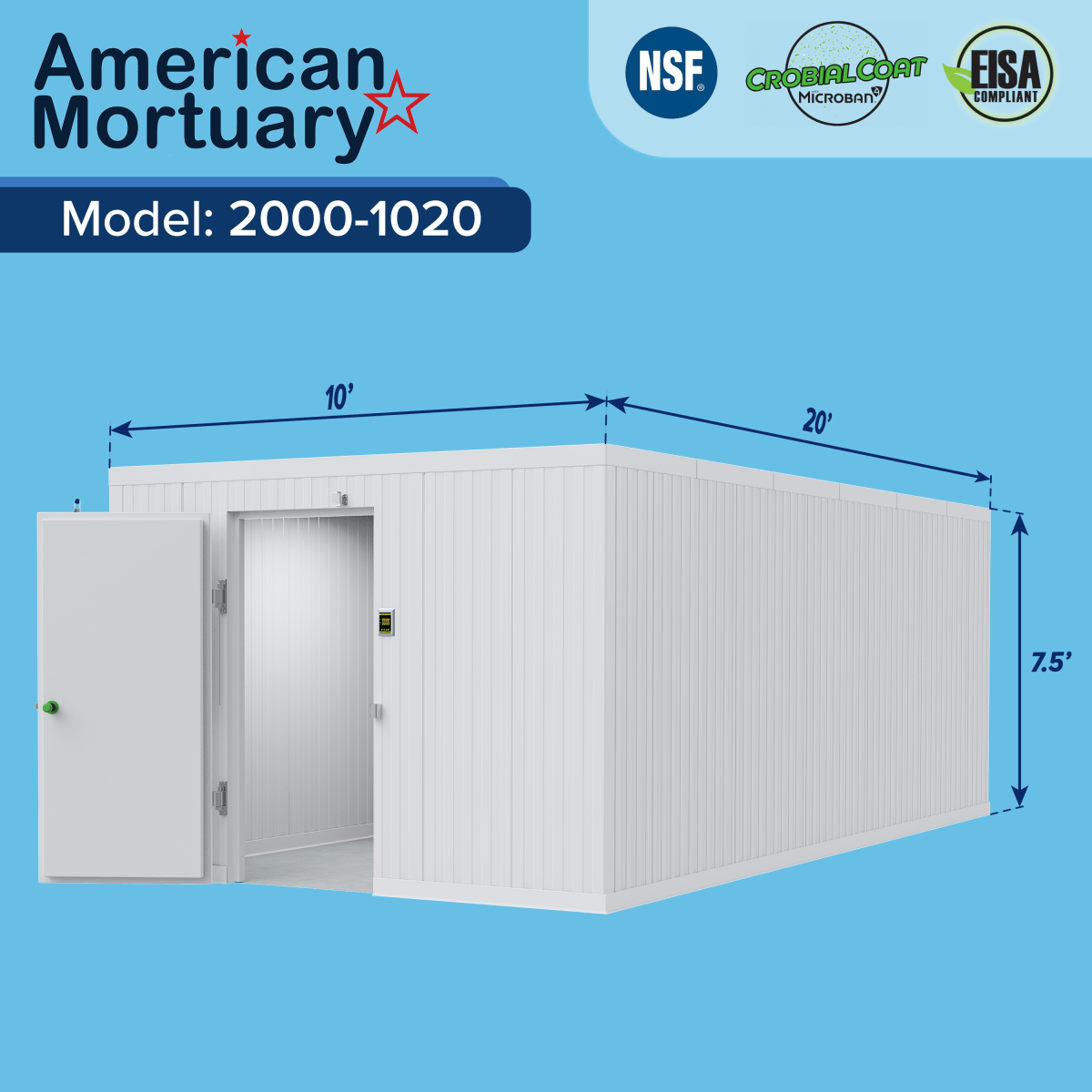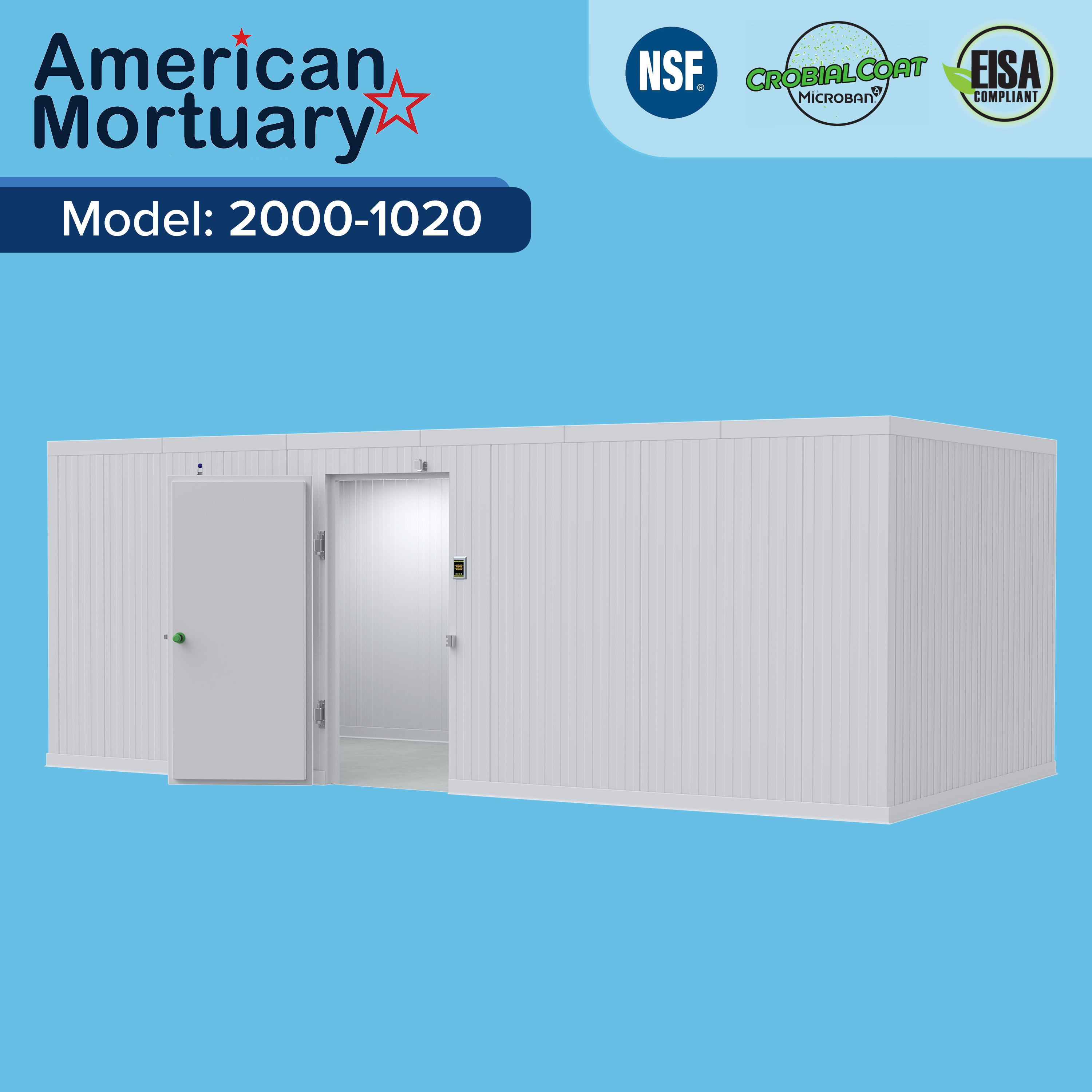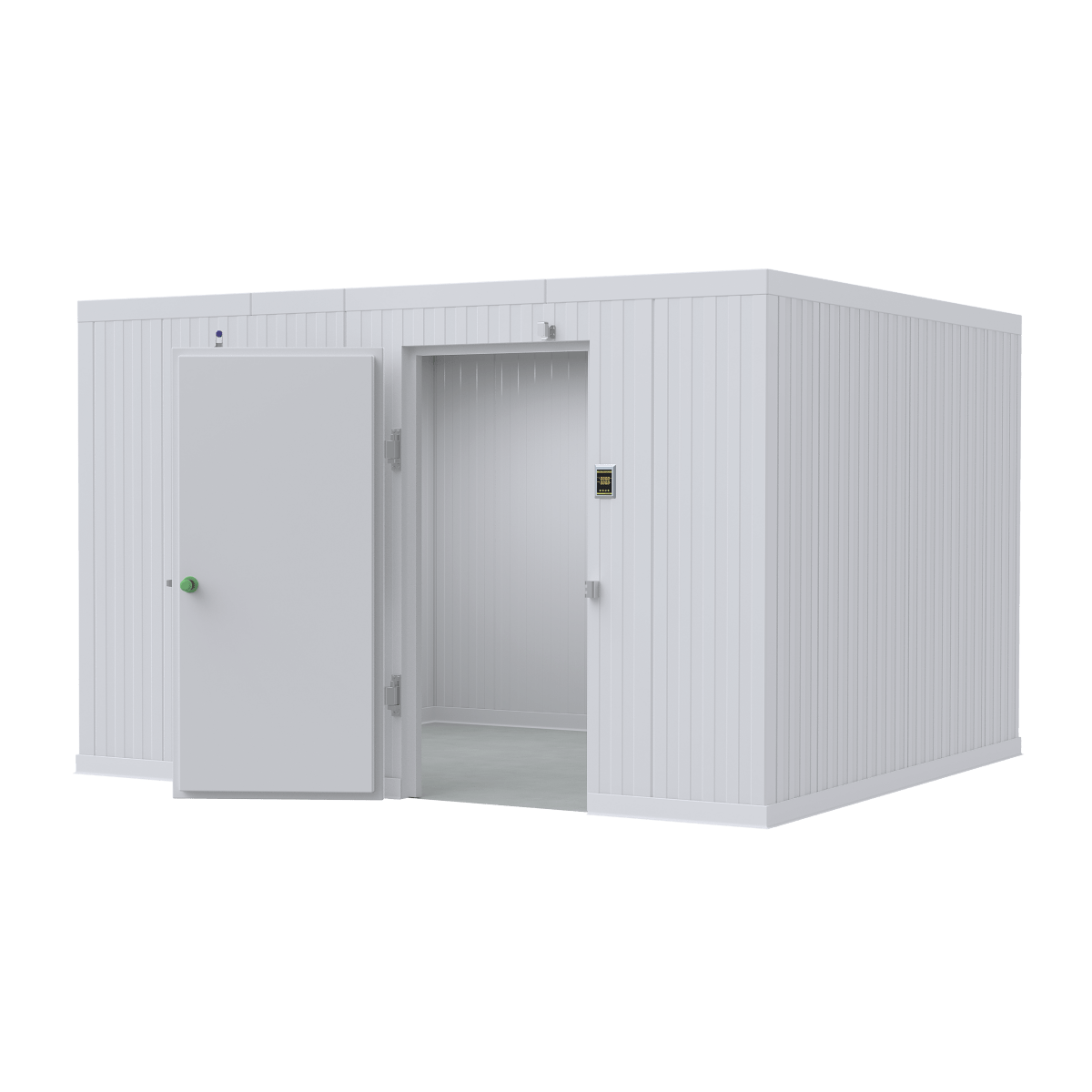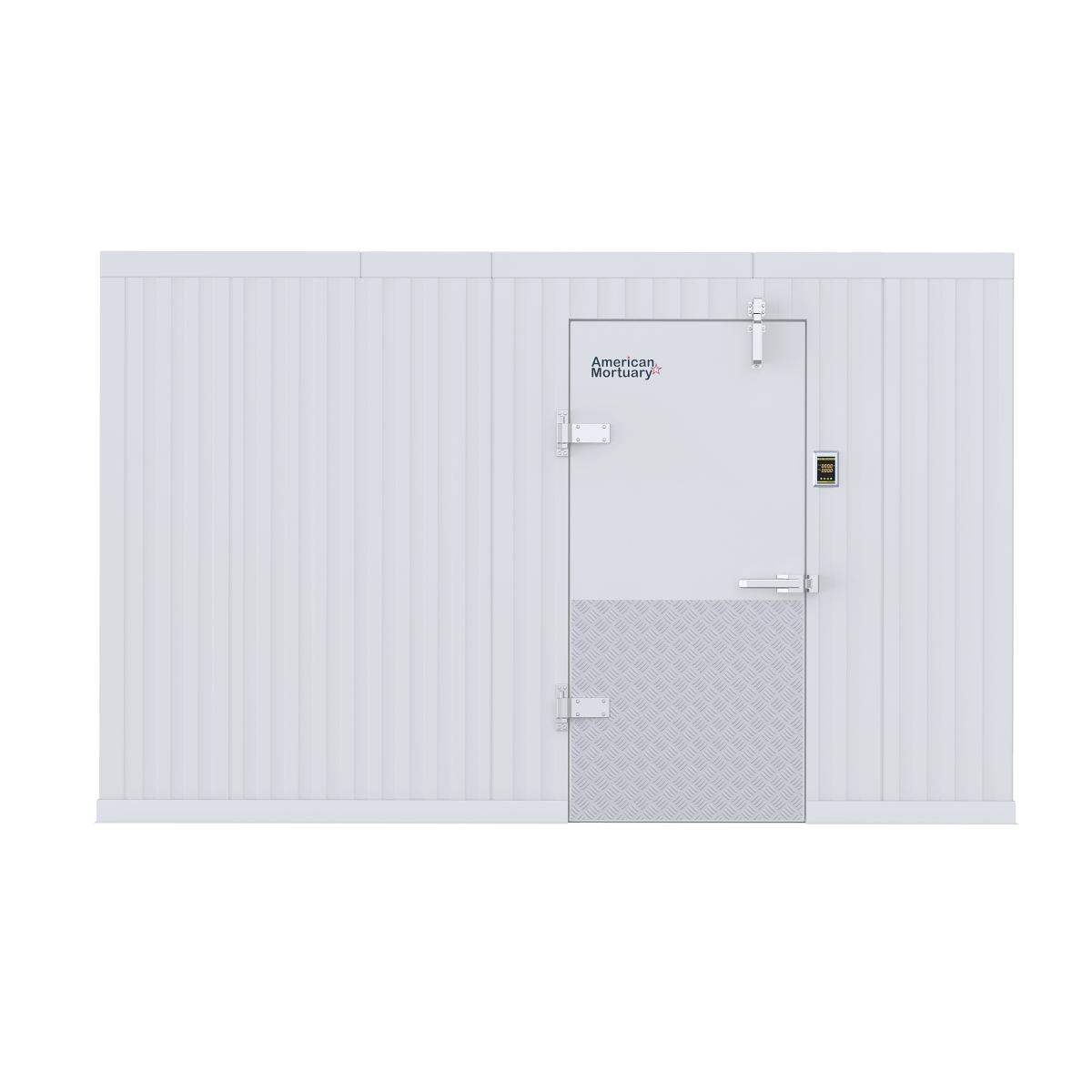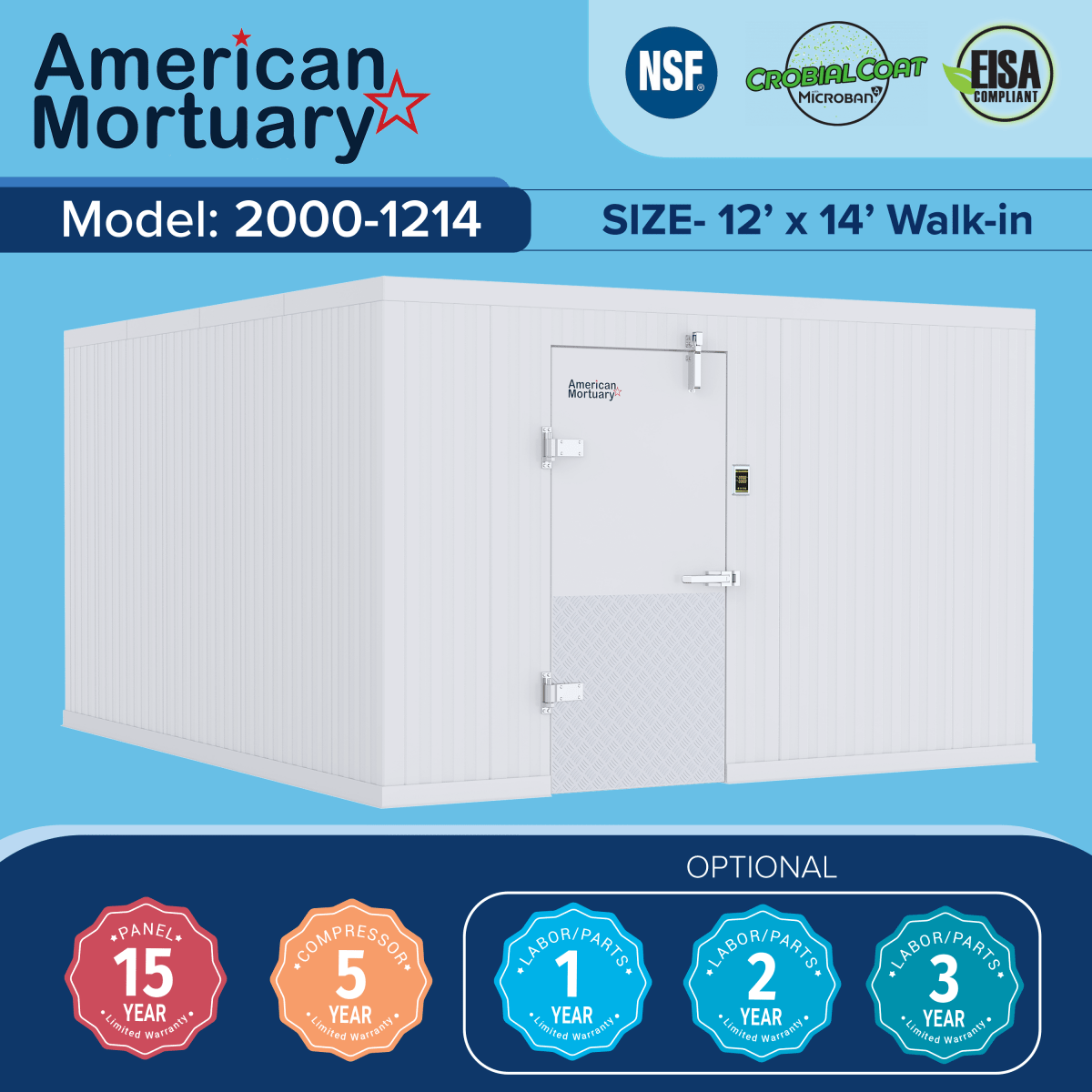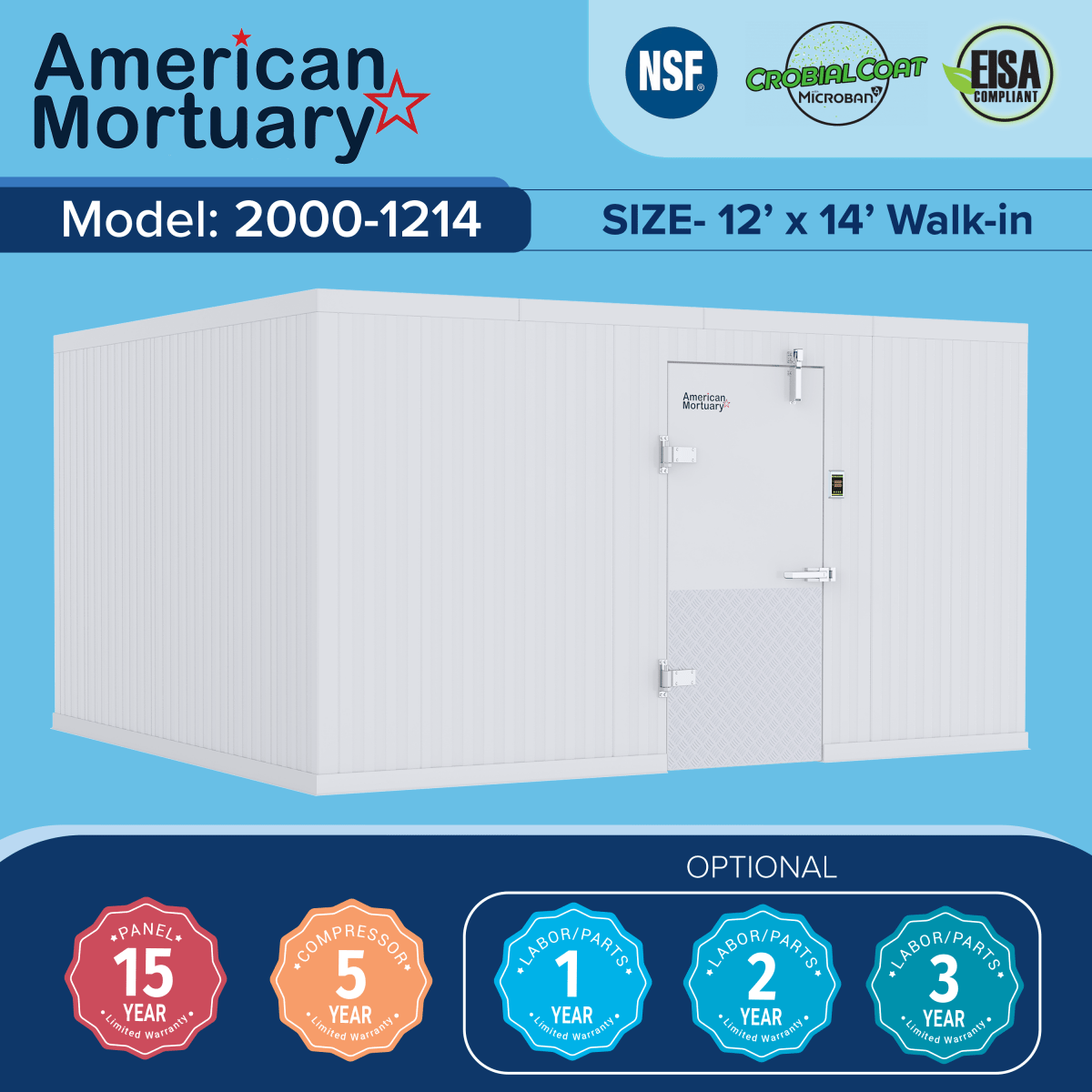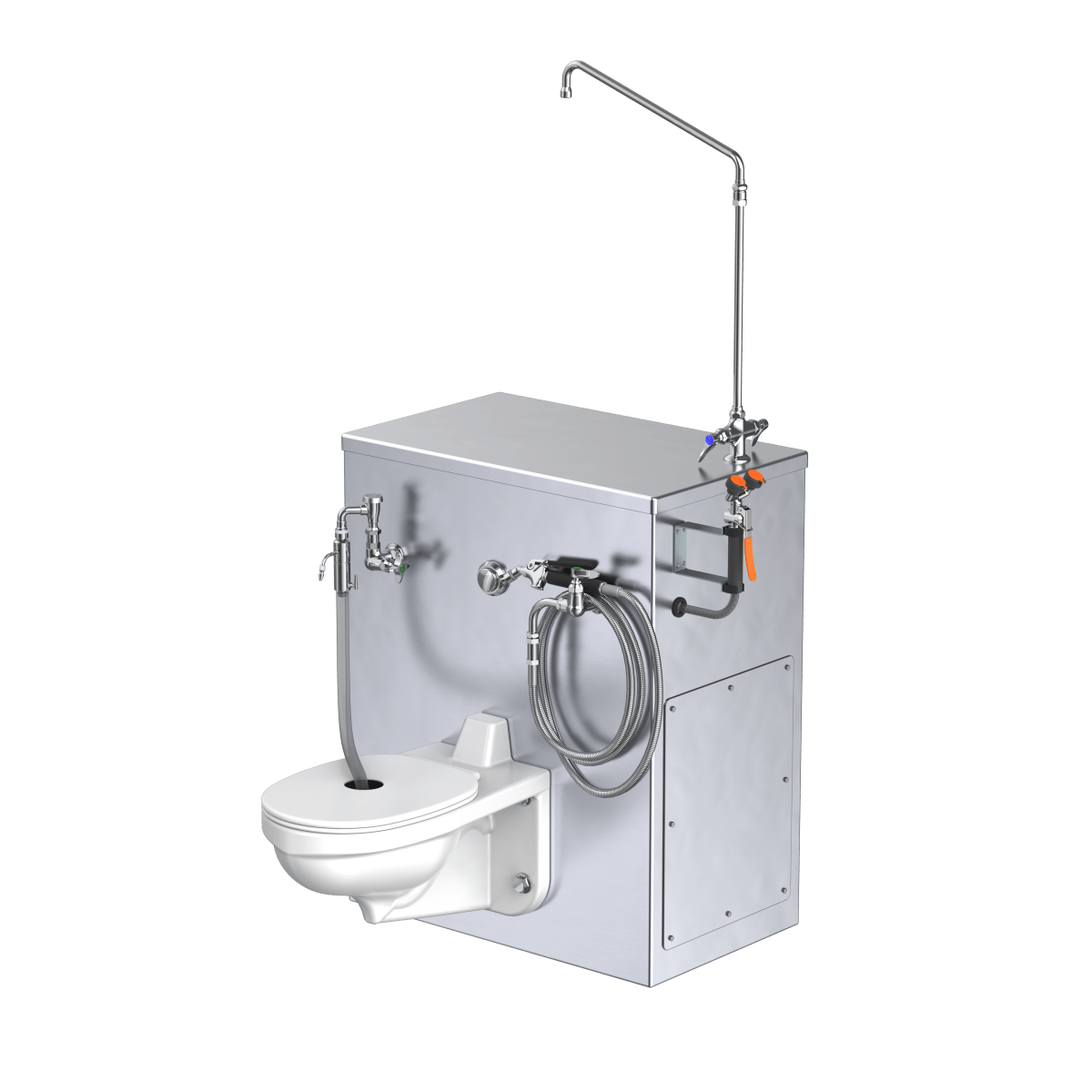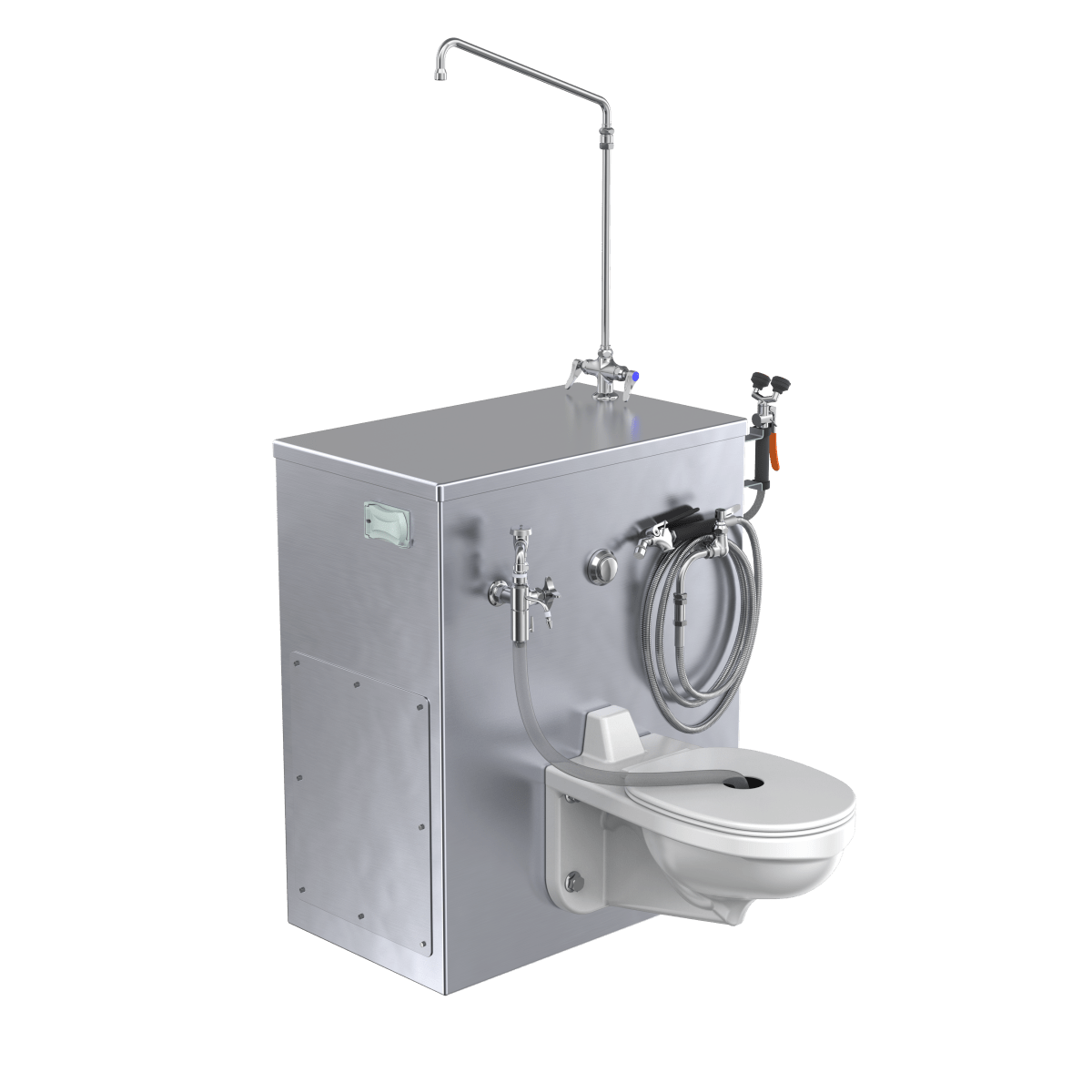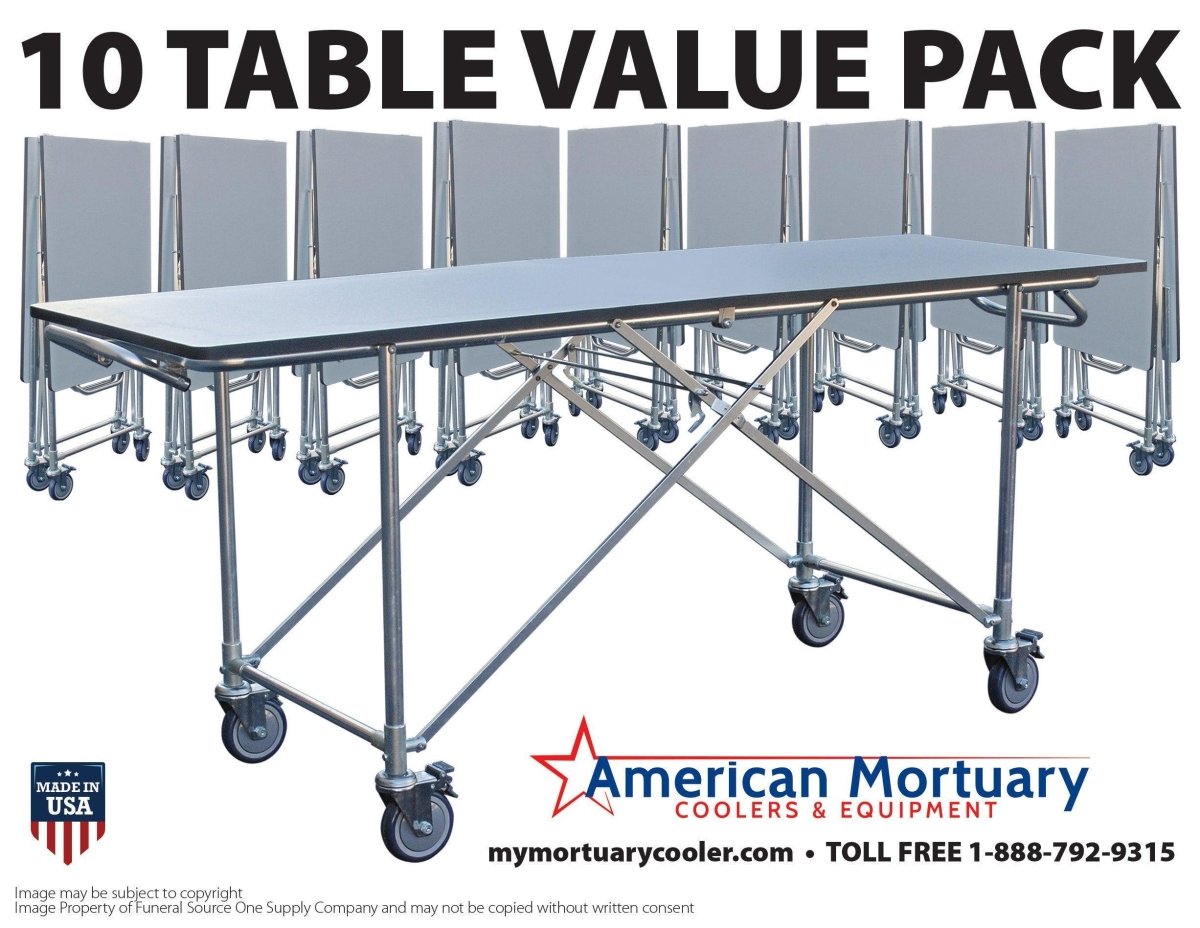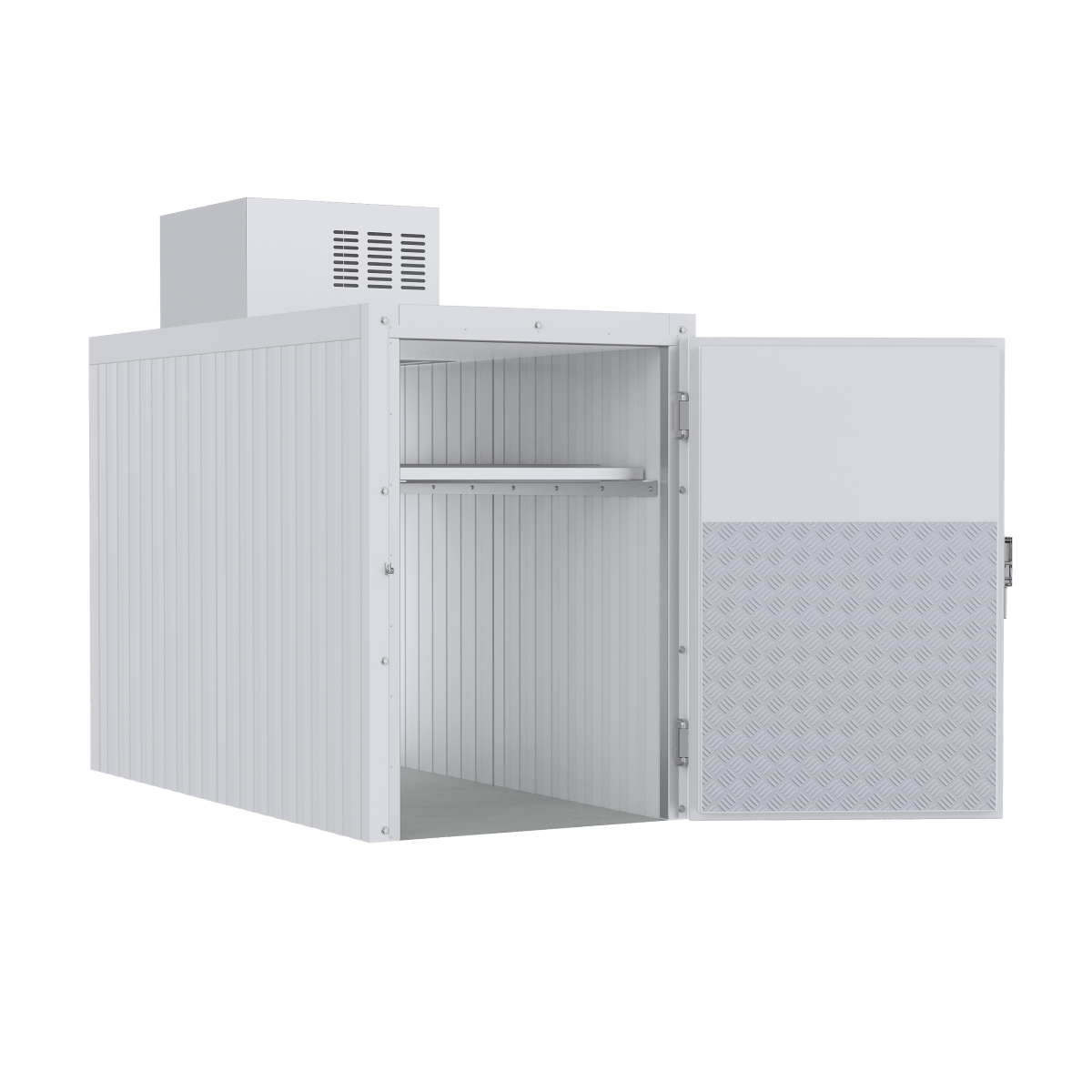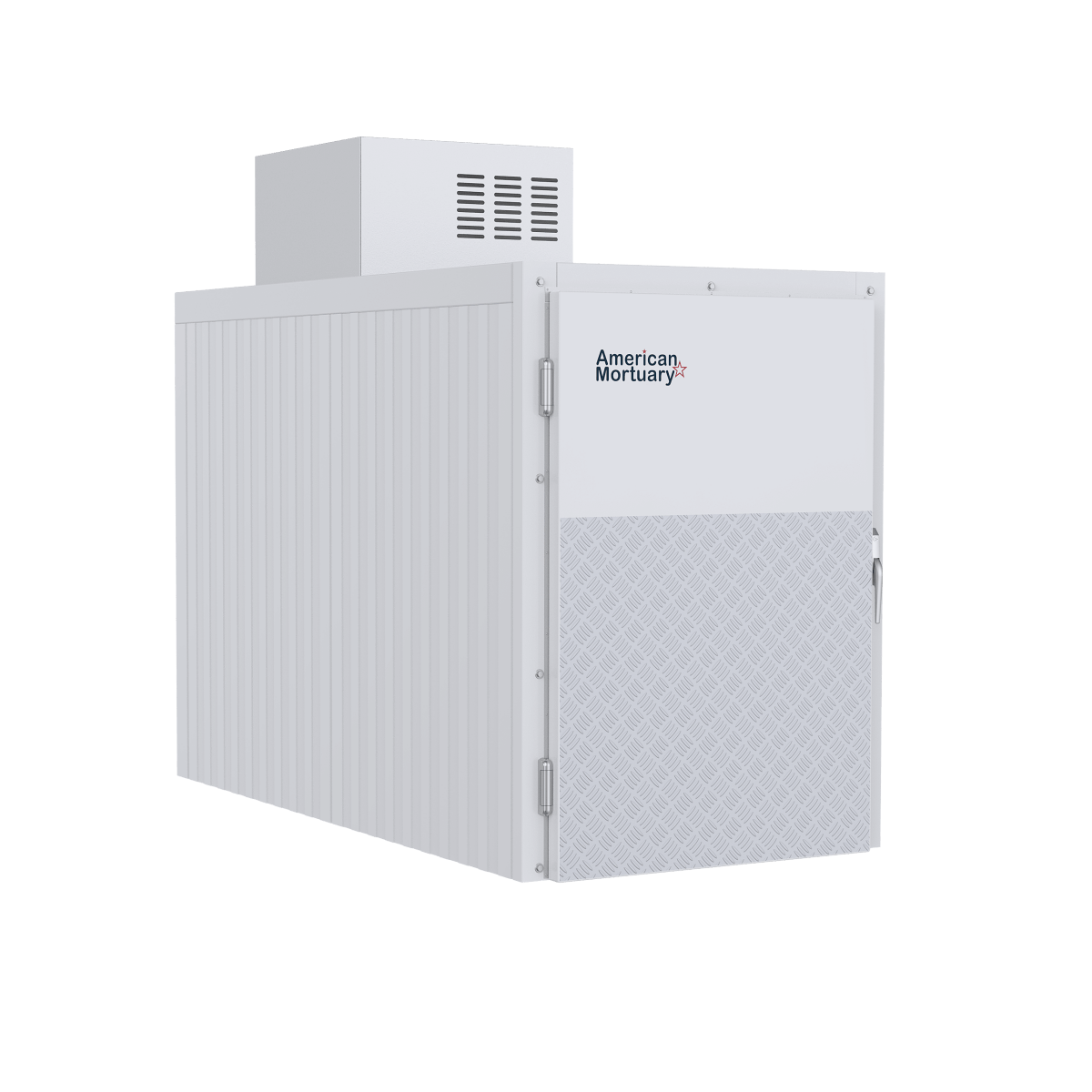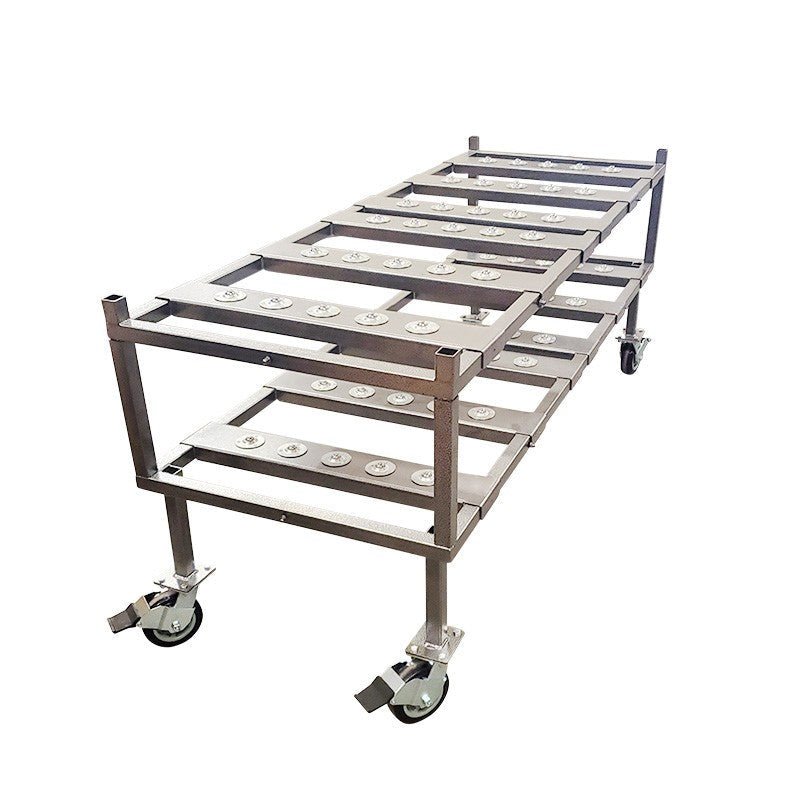Navigating the Critical World of Stretcher Ambulances
A stretcher ambulance is a specialized emergency vehicle equipped with an integrated loading system designed to safely transport patients on a gurney or cot. These vehicles are essential for medical transportation and come in various configurations.
Quick Guide to Stretcher Ambulances:
- Purpose: Safe patient transport between facilities or from emergency scenes
- Key Components: Powered or manual stretcher, securing system, loading mechanism
- Weight Capacity: Standard models support 350-700 lbs; bariatric versions up to 1,600 lbs
- Types: Manual, powered (hydraulic/electric), bariatric, folding, scoop, basket
- Average Cost: $10,000-$35,000 for new models; refurbished from $11,000
Emergency medical services face numerous challenges when operating stretcher ambulances, from ensuring proper patient safety to maintaining equipment that can withstand the demands of daily use. The complexities of loading patients, navigating tight spaces, and preventing crew injuries make selecting the right equipment critical for effective operations.
The physical toll on EMS personnel is significant - modern powered stretcher systems were developed specifically to reduce the approximately 30% of all EMS injuries related to patient handling and movement. With the right equipment, these risks can be substantially mitigated.
I'm Mortuary Cooler, a national-level supplier specializing in emergency transport equipment including stretcher ambulance systems that prioritize both patient and provider safety. My experience with stretcher ambulance technology has shown that proper equipment selection dramatically improves operational efficiency while reducing workplace injuries.

Stretcher ambulance word guide:
Understanding the Stretcher Ambulance Landscape
The stretcher ambulance ecosystem has evolved dramatically over the past few decades, changing from simple hand-carried devices to sophisticated powered systems that protect both patients and EMS personnel. Understanding this landscape is essential for agencies looking to optimize their operations.
In the emergency medical services world, terminology matters. While many people use the terms "gurney," "cot," and "stretcher" interchangeably, there are subtle differences. A stretcher typically refers to a device without wheels used to carry patients, while a gurney or cot usually has wheels and is designed to roll. In the stretcher ambulance context, we're typically referring to wheeled devices that can be loaded into an ambulance.
Ambulances themselves are classified into different types based on their capabilities and design:
- Type I: Modular ambulance on a truck chassis
- Type II: Van-style ambulance
- Type III: Modular ambulance on a van chassis
Each type offers different configurations and capacities for stretcher ambulance systems.
The most significant development in recent years has been the shift from manual to powered stretchers. Modern powered stretcher ambulances can lift up to 350 kg (770 lbs), which significantly reduces the physical strain on EMS crews. This is critical considering that back injuries are among the most common workplace injuries for emergency medical personnel.
"The introduction of powered stretcher systems has been a game-changer for EMS," says a veteran paramedic with over 20 years of experience. "What used to require four people can now be done safely by one or two, and the reduction in back injuries has been remarkable."
What Is a Stretcher Ambulance?
A stretcher ambulance is fundamentally a primary care vehicle equipped with a specialized mounting system designed to secure a patient transport device—typically a gurney or cot—during transit. These vehicles are purpose-built to ensure patient safety while providing EMS crews with the tools and space needed for emergency care.
The heart of any stretcher ambulance is its cot mount system. Modern ambulances feature built-in fastener rails that secure the stretcher in place, preventing movement during transport. These systems have evolved from simple straps and hooks to sophisticated locking mechanisms that meet stringent safety standards.
Many contemporary stretcher ambulances use what's known as an X-frame design for their cots. This configuration allows for multiple height positions and improved stability. The X-frame can be collapsed for loading and expanded to various heights for patient care and transfer.
Patient immobilization is another critical aspect of stretcher ambulance design. These vehicles come equipped with various restraint systems to secure patients safely during transport, especially important when dealing with traumatic injuries where minimizing movement is essential.
"When we're transporting a patient with suspected spinal injuries, the ability to properly immobilize them on a secure stretcher that won't shift during transport can literally be the difference between recovery and permanent disability," explains an emergency medicine physician who regularly works with ambulance crews.
How a Stretcher Ambulance Differs from a Standard Rig
Stretcher ambulances differ from standard ambulances in several key ways, all designed to optimize patient transport safety and crew ergonomics:
Integrated Fastener Rails: Stretcher ambulances feature specialized mounting systems embedded in the floor that lock the cot securely in place.
Low-Profile Floor: Many stretcher ambulances have a lower floor height to reduce the lifting required when loading patients.
Power-Load Systems: Advanced stretcher ambulances include powered loading systems that mechanically lift and secure the cot, eliminating manual lifting entirely.
Improved Crew Ergonomics: The interior layout is optimized for EMS personnel to access the patient from multiple angles while the stretcher is secured.
Suspension Systems: Stretcher ambulances often feature improved suspension to provide a smoother ride for patients, particularly important for those with traumatic injuries.
A paramedic supervisor who manages a fleet of ambulances notes, "The difference between a standard ambulance and a properly equipped stretcher ambulance with power-loading systems is night and day. Our injury rates have dropped significantly since upgrading, and patient satisfaction has improved because the loading process is smoother and less jarring."
Choosing the Right Ambulance Stretcher: Types & Key Features
Selecting the appropriate stretcher ambulance equipment is a critical decision that impacts patient care, crew safety, and operational efficiency. With options ranging from basic manual frames to sophisticated powered systems, understanding the key differences is essential.

When I first entered the emergency medical field, I was amazed at the variety of stretcher options available. Today's market offers everything from traditional manual frames that require physical lifting to sophisticated powered systems that do the heavy work for you. There are specialized bariatric models designed for larger patients, compact folding stretchers for tight spaces, split-design scoop stretchers that slide under patients with minimal movement, rugged basket stretchers for rough terrain, and versatile stair chairs that steer staircases with ease.
The features that matter most when choosing a stretcher ambulance system often depend on your specific needs. Weight capacity is crucial - standard models typically support between 350-700 pounds, while specialized bariatric versions can handle up to an impressive 1,600 pounds. Height adjustment capabilities ensure optimal patient care during transport, while compatibility with your ambulance's fastener system is absolutely non-negotiable for safety.
Don't overlook the mattress quality either - proper pressure distribution prevents bedsores during longer transports, and antimicrobial surfaces help with infection control. The stretcher's maneuverability in tight spaces and battery life (for powered models) will affect your daily operations more than you might initially realize.
"When we upgraded our fleet to powered stretchers, we spent considerable time evaluating not just the stretchers themselves, but how they integrated with our ambulances," says an EMS director from a mid-sized city. "The investment paid off in reduced injuries and faster response times."
For those interested in understanding more about different stretcher types, check out our article comparing medical stretchers vs mortuary stretchers.
Manual vs Powered Stretchers
The choice between manual and powered stretchers often comes down to balancing upfront costs against long-term benefits. Manual stretcher ambulance systems are certainly more budget-friendly initially, but they demand significant physical exertion from your crew.
With manual stretchers, your team will be doing hand lifting for raising and lowering patients, often requiring multiple crew members for safe operation. This creates greater physical strain, especially with heavier patients, and involves more complex loading procedures. I've seen many EMS veterans with chronic back problems from years of manual lifting - a painful career souvenir nobody wants.
Powered stretcher ambulance systems, while more expensive upfront, offer hydraulic or electric lift assistance that dramatically reduces physical strain. Many can be operated by a single provider, creating a smoother experience for patients during loading and unloading. The difference is like comparing moving furniture with and without a dolly - technically possible either way, but one approach leaves you much less sore the next day.
The numbers tell a compelling story: studies show approximately 30% fewer back strains and injuries among EMS crews using powered stretcher systems. A 2015 study in the Journal of Emergency Medical Services found agencies switching to powered stretchers saw a 43% reduction in stretcher-related injuries within just the first year. When you factor in reduced workers' compensation claims and fewer lost workdays, the higher initial investment often pays for itself surprisingly quickly.
"I was skeptical about the cost of powered stretchers until I threw my back out lifting a patient," admits a veteran paramedic I worked with. "After six weeks of recovery and physical therapy, I became the biggest advocate for our agency's transition to powered systems."
Bariatric & Specialty Stretchers
As our population changes, the need for specialized stretcher ambulance equipment has grown tremendously. Bariatric stretchers have become essential equipment for many services, designed specifically with larger patients in mind.
Today's bariatric stretcher ambulance systems offer expanded weight capacity up to 1,600 pounds - more than triple what standard models could handle just a decade ago. They feature widened deck surfaces that improve both comfort and safety, reinforced frames that can handle the additional weight, and specialized handle positions that give crews better leverage during movement.

Beyond bariatric needs, specialty stretchers address unique transport situations that standard equipment simply can't handle effectively. Military models are ruggedized for field operations with tactical features like blackout-compatible lighting. Aviation kits are specially designed for air medical transport with securing systems that meet flight safety standards. Pediatric systems feature adjustable harnesses sized appropriately for children of different ages - because kids aren't just small adults when it comes to medical care. We even have neonatal transport systems integrated with incubator units for the tiniest patients.
"Having the right equipment for the right patient is not just about comfort—it's about safety and dignity," emphasized a critical care transport nurse I consulted with. "When we transport a 500-pound patient, having a properly designed bariatric stretcher means we can provide care without compromising the patient's safety or our own."
For those handling specialized transport needs, you might also be interested in our guide to buying the MegaMover EMS for first responders.
Folding, Scoop & Basket Options
Sometimes the biggest challenge isn't transporting patients in the ambulance but reaching them in the first place. That's where folding, scoop, and basket stretchers become invaluable tools in your equipment arsenal.
Folding stretchers are the Swiss Army knives of patient transport - compact when stored but ready when needed. They're perfect for tight spaces like narrow hallways or crowded apartments where a standard stretcher simply won't fit. Their lightweight design makes them ideal for carrying patients up stairs or over distances, and they deploy quickly during mass casualty incidents when every second counts.
Scoop stretchers (sometimes called split stretchers) are ingeniously designed to separate into two halves longitudinally. This allows EMS crews to literally scoop patients up with minimal movement - absolutely critical when dealing with suspected spinal injuries. Many models offer adjustable length to accommodate patients of different heights, and some are even compatible with X-ray and MRI machines, eliminating the need for painful patient transfers at the hospital.
Basket stretchers are the workhorses of technical rescue scenarios. Their rigid construction provides stability during wilderness or search-and-rescue operations, while built-in hoist rings allow for vertical lifting in tight spaces or over difficult terrain. The protective sides prevent patient shifting during transport over bumpy ground, making them ideal for all-terrain evacuations.
"In remote areas, the journey to the ambulance might be the most challenging part of the rescue," explained a wilderness EMS specialist I interviewed. "Having the right specialized stretcher—whether it's a lightweight folding model for a long carry-out or a basket stretcher for technical terrain—can make all the difference."
For those interested in learning more about safe patient transfers, check out this scientific research on patient transfer safety.
These specialized stretchers complement your main stretcher ambulance system, solving the "last mile" problem of reaching and moving patients to the ambulance when conditions are less than ideal. At American Mortuary Coolers, we understand that having the right equipment for every situation isn't just about convenience - it's about providing dignified, safe care no matter the circumstances.
Safety, Standards & Integration Inside the Stretcher Ambulance
When it comes to emergency medical transport, safety isn't just a priority—it's absolutely non-negotiable. The world of stretcher ambulance systems is governed by rigorous standards that ensure both patients and EMS crews stay safe, even in the most challenging situations.
Think about it: ambulances often travel at high speeds through traffic while carrying vulnerable patients. That's why several key standards have been developed to make sure these critical systems can handle the stress:
- EN 1865: The European gold standard for patient handling equipment
- KKK-A-1822: America's federal specifications for ambulance design and function
- SAE J3027: The crash test protocols that ensure stretcher systems can withstand serious impacts
- NFPA 1917: The National Fire Protection Association's comprehensive ambulance standards
These aren't just paperwork requirements. They translate into real-world testing where stretcher ambulance systems must prove they can withstand forces equivalent to a 30 mph collision while keeping patients securely in place.
"The days of simply strapping a stretcher down with a couple of belts are long gone," explains a safety officer from a major EMS agency. "Today's stretcher ambulance systems are engineered to precise specifications and tested under extreme conditions to ensure patient and crew safety."

Modern stretcher ambulances come with an impressive array of safety features that work together as an integrated system. These include crash-tested fasteners that anchor the stretcher securely, anti-tip wheel locks that prevent unwanted movement, and infection control surfaces that can be quickly disinfected between calls.
Many agencies now implement daily inspection checklists to ensure all components function properly before the ambulance goes into service. This simple practice can prevent equipment failures when they would matter most.
How Powered Systems Protect Patients & Crew
The shift toward powered stretcher systems represents one of the biggest leaps forward in stretcher ambulance safety. These systems aren't just about convenience—they're fundamentally changing the safety equation for everyone involved.
Modern powered systems can automatically lift up to 700 pounds, taking the physical strain off EMS providers. The zero-lift entry systems completely eliminate the need to manually lift stretchers into the ambulance, addressing one of the most dangerous moments in patient transport.
"After implementing powered stretcher systems across our fleet, we saw workers' compensation claims related to patient handling drop by more than half in the first year," shares a risk manager from a hospital-based EMS service. "The return on investment was clear and immediate."
The statistics back this up: studies have documented a remarkable 41% reduction in cot-related injuries following the implementation of powered stretcher and load systems. For EMS providers who face career-threatening back injuries all too often, this technology is truly life-changing.
Patients benefit too. Powered systems provide smoother transfers with consistent operation that doesn't depend on the physical strength of the crew. This means greater stability during movement and significantly reduced risk of drops or mishandling—especially important for patients with spinal injuries or other trauma.
Securing the Stretcher Ambulance Loading System
The moment of loading a patient into an ambulance represents a critical safety juncture. Modern stretcher ambulance loading systems incorporate multiple layers of protection to prevent accidents during this vulnerable transition.
Load height sensors ensure the stretcher is positioned correctly before loading begins. If something's not right, audible alerts warn the crew immediately, while visual indicators clearly show when locks are properly engaged. Most importantly, redundant locking mechanisms provide multiple securing points so that even if one fails, others will keep the patient safe.
"One of the most dangerous moments in patient transport is the transition between the ground and the ambulance," an EMS educator with 15 years of field experience told us. "Modern stretcher ambulance loading systems now have multiple fail-safes to prevent accidents during this critical phase."
But even the best equipment requires proper training. Leading EMS agencies implement comprehensive training programs that include hands-on practice, troubleshooting exercises, regular refreshers, and scenario-based drills that simulate challenging situations like uneven terrain or tight spaces.
The combination of advanced technology and thorough training creates a safety system that protects everyone involved. For agencies looking to upgrade their stretcher ambulance systems, investing in both the equipment and the training to use it properly offers the best path to safer operations.
For more information about specialized patient movement equipment, check out our comprehensive guide to comparing scoop stretcher features or learn about buying the MegaMover EMS for first responders.
Budgeting for Stretchers: Costs, Rentals, Trade-Ins & Maintenance
Let's talk money, shall we? When it comes to stretcher ambulance equipment, your wallet is definitely going to feel it. New powered systems often exceed $30,000, while refurbished models start around $11,000 – not exactly pocket change for most EMS agencies.

The good news? Recertified stretcher ambulance equipment can save you up to 50% compared to those shiny new models. For smaller agencies watching every penny, this can be the difference between upgrading your equipment this year or putting it off for another budget cycle.
"We approach stretcher purchases like we're buying a house, not a hamburger," jokes Maria, a procurement officer for a county EMS system. "We're thinking about living with this equipment for 7-10 years, so we look at the whole picture – maintenance costs, parts availability, how much downtime we might face."
Beyond the sticker price, you'll need to budget for regular preventative maintenance, battery replacements every few years, annual load testing to verify weight capacity, and parts. And don't forget to read the fine print on that warranty!
For agencies with fluctuating needs, rental options can be a lifesaver. Need extra equipment for the county fair? Temporary replacement while your regular stretcher gets serviced? Want to test-drive a new model before committing? Daily and monthly rentals have you covered.
Typical Price Ranges & ROI
If you're updating your budget spreadsheet, here's what you should pencil in:
Manual stretchers will set you back about $2,000–$5,000. Going powered? That jumps to $25,000–$35,000. Need bariatric models? Plan on $12,000–$20,000. And if you want the full power-load system (separate from the stretcher itself), add another $20,000–$30,000.
I know what you're thinking – that's a lot of money! But the return on investment comes in ways you might not immediately see on a balance sheet.
"Our crew used to joke that we didn't need gym memberships because we lifted patients all day," says Jamie, an EMS director. "But those back injuries weren't funny when we tallied up the worker's comp claims. After switching to powered stretcher ambulance systems, our injury-related costs dropped by $115,000 in just 18 months. The systems basically paid for themselves in two years."
Beyond reduced injuries, you'll see extended equipment life with proper care, happier patients who experience smoother transfers, and faster call turnaround times. Your crews spend less time wrestling with equipment and more time focusing on patient care – and isn't that the whole point?
Maintenance & Safety Checks That Keep You Compliant
Let's be honest – the most expensive stretcher is the one that fails when you're transporting a critical patient. Regular maintenance isn't just about checking boxes; it's about reliability when lives are on the line.
A solid maintenance program for your stretcher ambulance equipment should include daily visual inspections (looking for obvious damage), weekly function tests of all mechanical systems, monthly checks to ensure all fasteners remain tight, quarterly preventative maintenance, and annual certification testing.
"I've seen crews try to 'MacGyver' fixes on damaged stretchers because they didn't want to report issues," shares a maintenance supervisor. "That's like putting a Band-Aid on a broken leg. Regular maintenance prevents those emergency fixes and keeps everyone safer."
With increased focus on infection control, don't overlook proper disinfection protocols. Those stretcher ambulance mattresses and straps need thorough cleaning between patients. Many modern stretchers feature antimicrobial surfaces and seamless designs specifically to make this easier.
Keep detailed documentation of all maintenance activities – not just because regulators might ask, but because tracking helps identify patterns and prevent bigger problems. Many agencies now use digital systems to ensure no maintenance intervals slip through the cracks.
Rental & Trade-In Pathways
Working with a tight budget doesn't mean you're stuck with outdated equipment. Consider these alternative pathways:
Renting additional stretchers makes perfect sense for event surge demand. Why buy equipment you'll only need during the annual marathon or music festival? Similarly, agencies in tourist destinations often rent during peak seasons when call volumes triple.
"We're a beach town with 5,000 year-round residents that swells to 50,000 in summer," explains Sam, a coastal EMS director. "Owning enough stretcher ambulance equipment for peak season would be like buying a bus for your family's annual reunion. Rentals give us the flexibility we need."
Trade-in programs offer another smart option. Most manufacturers and distributors will give you credit for existing equipment when you upgrade. The value typically depends on age, condition, maintenance history, and market demand for refurbished units.
A fire chief whose department recently upgraded shared, "The trade-in value of our existing stretchers covered about 30% of our new equipment costs. That made the budget conversation with our county commissioners much more pleasant!"
At American Mortuary Coolers, we understand the importance of durable, reliable equipment. While our specialty is custom mortuary solutions, we appreciate the critical role that quality emergency transport equipment plays in the healthcare continuum. Our focus on craftsmanship and durability carries through everything we do – because equipment failures are never an option when lives or dignity are at stake.
Future Trends & Innovations in Stretcher Ambulance Technology
The world of stretcher ambulance technology is on the cusp of an exciting evolution. What was once a field dominated by simple mechanical designs is now embracing smart technology, advanced materials, and data integration to create safer and more efficient patient transport systems.

I've been watching these developments closely, and the innovations coming to market are truly remarkable. Smart load sensors now detect weight distribution and center of gravity, making adjustments automatically to ensure optimal balance during transport. This technology is particularly valuable when navigating uneven terrain or ramps.
Telematics integration is another game-changer. Modern stretchers can now communicate directly with vehicle systems and even update medical records in real-time. Imagine a stretcher that automatically transmits the patient's position, movement, and basic vitals to the receiving hospital before you even arrive!
"The stretcher of tomorrow won't just be a platform for patients—it'll be an active participant in their care journey," explains a veteran paramedic who's been testing some of these new systems.
Materials science is revolutionizing stretcher construction too. Composite carbon frames maintain incredible strength while significantly reducing weight, making them easier on EMS crews' backs and allowing for greater maneuverability in tight spaces.
Perhaps most exciting is the development of autonomous power-assist technology. These intelligent motors adapt to terrain and loading conditions, providing extra power precisely when and where it's needed. One EMS director told me, "It's like having an extra pair of hands exactly when you need them most."
Other innovations worth watching include:
IoT mattress monitoring with pressure sensors that detect subtle patient movements and vital signs, solar battery charging systems for extended field operations, and even AI weight estimation technology that uses computer vision to optimize lifting parameters before you even touch the patient.
"We used to just worry about getting the patient from point A to point B," a seasoned paramedic shared with me. "Now these smart stretchers are actually contributing to patient assessment and care. It's a whole new world."

How Upcoming Tech Will Change Stretcher Ambulance Operations
The ripple effects of these technological advances will transform everyday stretcher ambulance operations in profound ways.
Data analytics is already changing how agencies manage their equipment fleets. By collecting and analyzing loading patterns, weight distribution, and usage statistics, EMS services can optimize their resources and identify training needs. One agency reported a 23% improvement in efficiency after implementing analytics-based training adjustments.
"The data doesn't lie," said one operations manager. "We finded patterns in how our crews were using equipment that pointed to specific training opportunities we would have never identified otherwise."
Predictive maintenance represents another major leap forward. AI systems can now forecast potential equipment failures before they occur by monitoring subtle changes in performance metrics. This means fewer out-of-service stretchers and, more importantly, fewer failures during critical patient care moments.
I spoke with a maintenance supervisor who implemented a predictive system last year: "We've virtually eliminated unexpected breakdowns. The system alerted us to a potential hydraulic issue on one unit two weeks before it would have failed in the field. That could have been catastrophic for a patient."
Crew fatigue alerts are particularly exciting for those concerned with provider safety. These monitoring systems detect when EMS personnel are approaching physical limits, helping prevent injuries before they occur. In an industry where back injuries remain commonplace, this technology could be transformative.
Perhaps most is the move toward complete fleet integration. Tomorrow's stretchers will communicate seamlessly with ambulance systems, hospital records, and dispatch centers to optimize resource allocation and patient handoffs.
A technology officer at a major urban EMS service shared, "When our stretchers started talking to our other systems, magic happened. Documentation time dropped 15%, hospital handoffs improved by nearly 20%, and our crews reported feeling less stressed. The stretchers became active participants in the care process rather than just tools."
As with any technology, what seems cutting-edge today will likely become standard tomorrow. Just as powered lift systems evolved from luxury items to essential safety equipment, these smart technologies will soon be considered basic requirements for any quality stretcher ambulance system.
At American Mortuary Coolers, we're committed to staying at the forefront of these developments, ensuring our customers always have access to the most durable, innovative equipment solutions available. The future of stretcher technology isn't just about fancy features—it's about creating safer conditions for both patients and the dedicated professionals who care for them.
More info about Mobi Medical equipment
Frequently Asked Questions about Stretcher Ambulance Operations
How much weight can modern stretcher ambulances safely lift?
When it comes to patient transport, weight capacity is one of the most common concerns I hear from EMS teams. Modern stretcher ambulance systems have come a long way in supporting various patient needs.
Standard powered stretchers typically handle up to 700 pounds, which covers most transport situations you'll encounter. For services regularly working with larger patients, specialized bariatric models can support an impressive 1,600 pounds. If you're still using manual stretchers, they generally max out around 650 pounds.
Remember though, these numbers aren't the whole story. Your actual safe lifting capacity depends on several factors including the specific model, whether you're using a power-load system, how well-maintained your equipment is, and how many crew members you have available.
As one safety trainer I spoke with put it: "Even the highest-rated stretcher can fail if it hasn't been properly maintained or if it's being used incorrectly." This is why regular maintenance isn't just a good idea—it's essential for safety.
If your service regularly transports larger patients, I'd strongly recommend investing in dedicated bariatric equipment rather than routinely pushing standard stretchers to their maximum capacity. Your patients—and your crew's backs—will thank you.
What regulations govern stretcher ambulance fastening systems?
Safety standards for stretcher ambulance fastening systems are no joke—they're designed to protect patients and crew during the worst-case scenarios. Several key regulations ensure these systems can withstand the forces experienced during a collision.
The SAE J3027 standard from the Society of Automotive Engineers specifies performance requirements for stretcher integrity and retention. The federal KKK-A-1822F specification adds another layer of requirements for patient cot retention. For fire departments, the NFPA 1917 standard addresses fastening systems specifically for ambulances. European services follow EN 1789 for medical vehicles and equipment.
These standards typically require fastening systems to withstand impressive forces: 10 G forward and rearward, 5 G laterally, and 5 G vertically. To put that in perspective, that's like having your stretcher stay firmly secured while experiencing forces several times stronger than what astronauts feel during a rocket launch.
An ambulance safety consultant I interviewed emphasized: "These requirements aren't just regulatory checkboxes—they represent the minimum forces a stretcher ambulance fastening system must withstand in a collision to keep everyone safe."
One critical point often overlooked: ensure both your stretchers and ambulance fastening systems are compatible and certified to the same standards. Mixing components from different manufacturers can compromise safety unless they've been specifically tested together.
Are refurbished powered stretchers as safe as new units?
I've worked with many services facing tight budgets who ask this exact question. The short answer is yes—properly recertified stretcher ambulance equipment can offer safety performance comparable to new units, often at 40-50% lower cost.
The key word here is "properly." Quality refurbished stretchers should undergo a comprehensive process including complete disassembly, thorough inspection, replacement of worn parts, software updates, and rigorous testing. They should also come with new batteries and full certification documentation.
"A properly refurbished stretcher from a reputable company should function like new," a procurement specialist told me after outfitting their entire fleet with a mix of new and refurbished units. "The secret is working with vendors who have factory-trained technicians and access to original parts."
If you're considering the refurbished route, here's my advice: request detailed documentation of the refurbishment process, check the warranty terms (typically one year for refurbished versus two to three for new), verify the unit has been updated to current safety standards, and thoroughly test the equipment before putting it into service.
When these guidelines are followed, refurbished units can provide excellent value while maintaining the safety standards your crews and patients deserve. At American Mortuary Coolers, we've seen many services successfully integrate quality refurbished equipment into their fleets, allowing them to stretch their budgets without compromising on safety or performance.
Conclusion
The world of stretcher ambulance technology is constantly changing, with each innovation making emergency transport safer and more efficient. It's amazing to see how far we've come – from the days of manual lifting that put such strain on EMS crews to today's powered systems that can handle the weight of patients with the push of a button.
When EMS agencies look at upgrading their stretcher ambulance equipment, they're balancing several important factors. It's not just about the price tag hanging on the equipment today, but understanding the full picture – how much will maintenance cost over time? Will a powered system prevent costly back injuries? Do they need specialized equipment for bariatric patients? Sometimes the more expensive option actually saves money in the long run when you factor in fewer workplace injuries and longer equipment life.
I've seen many agencies struggle with the decision between brand new equipment and quality refurbished units. The truth is, a properly recertified stretcher ambulance can provide excellent service at nearly half the cost of new equipment – a crucial consideration for departments with tight budgets.
At American Mortuary Coolers, we understand the importance of dependable transport equipment. While our primary focus is on mortuary solutions, we share a commitment to quality and reliability that resonates with EMS professionals. We believe in building equipment that stands the test of time, and our custom solutions delivered directly across the contiguous 48 states reflect this dedication to excellence.
Looking ahead, the future of stretcher ambulance technology is incredibly promising. We're seeing the emergence of smart systems that can communicate with the ambulance itself, stretchers made from advanced materials that are both lighter and stronger, and designs that put provider ergonomics front and center. These innovations aren't just fancy bells and whistles – they represent real improvements that make a difference in patient outcomes and provider health.
For EMS agencies, success comes down to making informed choices about equipment, maintaining it properly, and keeping an eye on emerging technologies that might benefit their operations. By taking this approach, they can provide the best possible care while protecting their most valuable resource – their people.


